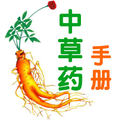Click on the top“Herbal Medicine Handbook”, then click“Follow”
Learn to identify Chinese herbs and gain comprehensive knowledge about them.


1. Eyes
1. Symptoms around the eyes
Swollen eyelids indicate reduced function of internal organs (kidneys, gastrointestinal tract, heart) leading to fluid retention in the body.
Wrinkles below the eyes are a sign of aging.
Sunken eye sockets indicate excessive energy consumption.
White inner eyelids may suggest anemia.
Yellowish-white spots on the eyelids could indicate high cholesterol.
2. Eye conditions
Yellowing of the sclera is a warning sign of liver and gallbladder issues (jaundice).
Red streaks in the sclera indicate liver stress causing blood vessel congestion.
Eye twitching is a sign of weakened immunity.
3. Functional disorders of the eyes
Inability to fully close the eyes during sleep may indicate gastrointestinal issues leading to muscle weakness.
Frequent eye fatigue suggests liver dysfunction.
4. Eye secretions
“Eye discharge,” yellow discharge indicates “pus” (inflammation).
Dry eyes can easily lead to eye diseases.
Excessive tearing may occur when liver function is weakened.

2. Mouth
1. Around the mouth
Cracked corners of the mouth may indicate gastritis leading to false appetite.
Acne around the mouth suggests weak gastrointestinal function.
Dry lips can result from elevated body temperature.
Pale lips are a warning sign of insufficient blood.
Red lips indicate excessive internal heat.
2. Oral symptoms and secretions
Stomatitis is evidence of lowered immunity.
Bad breath can have five causes (active gastritis, indigestion, rhinitis, gum disease, dental plaque).
Feeling dry mouth with thick saliva indicates overall dehydration.
Finding a pool of saliva on the pillow in the morning may suggest weakened gastrointestinal function.

3. Tongue
1. Tongue shape
Jagged edges on the tongue indicate swelling due to excess moisture.
Cracked tongue surface suggests insufficient moisture.
2. Tongue movement
Slanted tongue is a signal of cerebrovascular issues.
Trembling tongue indicates bodily weakness.
3. Tongue color
Red tongue body indicates elevated body temperature.
Pale tongue body suggests weakness.
Purple tongue indicates thick blood.
Varicose veins on the tongue’s surface are a dangerous signal of poor blood flow.
4. Tongue size
Large and thick tongue indicates excess moisture in the body.
Small and thin tongue indicates insufficient moisture.
5. Tongue coating thickness
Thick tongue coating, almost obscuring the tongue surface, suggests gastrointestinal disorders or possible diseases.
Thin tongue coating, nearly invisible, indicates weakness or allergic constitution.
6. Tongue coating color
White tongue coating indicates low body temperature and reduced bodily functions.
Yellow tongue coating indicates internal “heat.”
Black tongue coating indicates extreme physical exhaustion.

4. Nose
1. Nose condition
Nose size indicates respiratory function strength.
Nostrils flaring indicate difficulty in breathing.
2. Skin condition of the nose
Acne on the nose tip may indicate respiratory issues.
Red nose tip signals excessive alcohol consumption.
3. Nasal secretions
Nasal secretions can indicate body temperature; treatment for colds varies based on the type of nasal discharge.
Nasal congestion, if ignored, can lead to systemic hypoxia.
Frequent nosebleeds are often caused by weakened gastrointestinal function.

5. Cheeks
1. Facial color
Red and hot cheeks indicate malfunction in temperature regulation.
Pale cheeks suggest insufficient oxygen supply.
2. Skin condition
Wrinkles on the cheekbones are primarily caused by UV exposure.
Acne on the cheeks may indicate dietary excess or constipation.
Enlarged pores on the cheeks are mainly due to reduced sebum.

6. Teeth
1. Tooth condition
Prone to cavities may indicate osteoporosis.
Gray teeth suggest the formation of cavities inside.
2. Gum condition
Swollen gums may indicate gastritis or fatigue.
Bleeding gums may indicate gum inflammation or weak gastrointestinal function.

7. Hair
1. Hair quality
Thinning hair may indicate anemia or aging.
Adolescent baldness may result from excessive fat intake leading to hair depletion.
Excessive hair loss can indicate early signs of disease.
Premature graying may relate to calcium levels and hair.
Curly hair may indicate thinning hair.
Excessive split ends and breakage may be caused by anemia during menstruation.
2. Scalp condition
Excessive dandruff can be classified as “dry” (requiring iron and protein) or “oily” (requiring improved fat metabolism and Vitamin B supplementation).
Soft and elastic scalp indicates swelling.

8. Nails
1. Nail shape
Nails with longitudinal cracks indicate aging-related “wrinkles.”
Nails with transverse cracks indicate records of “past” (bodily discomfort).
Prone to breakage may indicate anemia or poor liver function.
Spoon nails are a signal of bodily distress (severe anemia, uterine fibroids, endometriosis; detailed examination recommended).
Clubbing nails (bulging forward) are often seen in individuals with heart disease.
Disappearance of the white crescent at the nail base indicates physical decline.
Dry nails indicate a state of dryness.
2. Nail color
Red nails indicate thick blood (monitor cardiovascular health).
Purple-black nails indicate turbid blood or poor heart function.
White nails suggest a tendency towards anemia.


